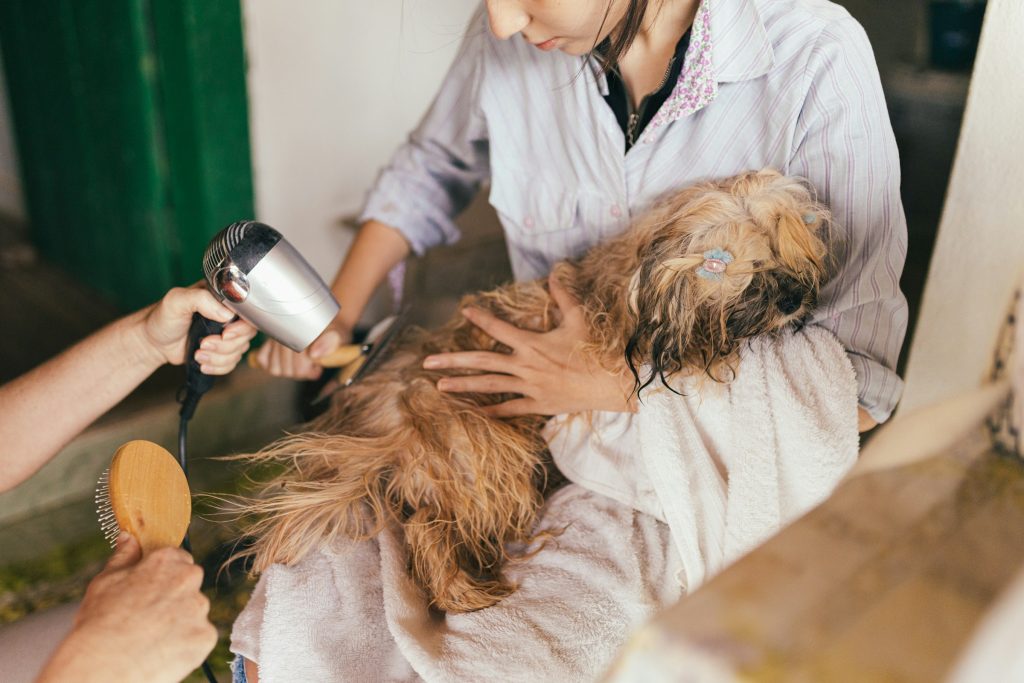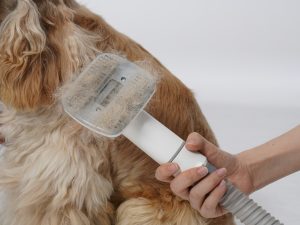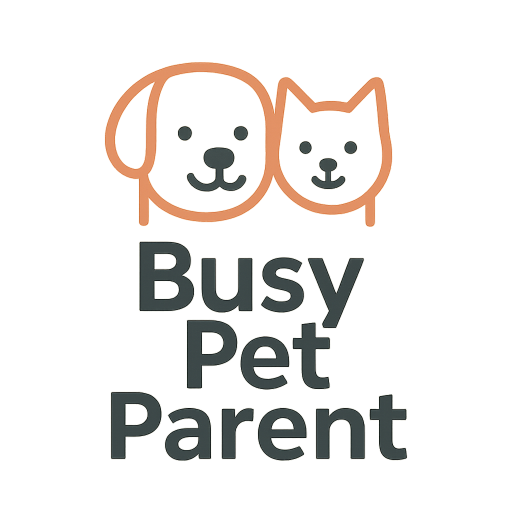
25 Powerful Ways to Save Money on Pet Care Without Sacrificing Quality
Pet ownership brings immeasurable joy—but it also comes with real expenses. Between food, vet care, gear, grooming, and unexpected emergencies, the costs can pile up fast. The good news? There are countless ways to reduce those expenses while still giving your pet a safe, happy, and healthy life. This guide shares 25 powerful, proven strategies to help you save money on pet care without cutting corners.
Whether you're caring for a playful puppy, a senior cat, or anything in between, these tips are designed to make smart savings feel effortless. Let’s dive into how you can spend less—and still give your pet the very best.
1. Master the Basics of Preventive Care
The number one way to reduce long-term pet expenses is by preventing health problems before they start. That means keeping up with vaccinations, flea/tick prevention, dental care, and annual vet visits. These small, proactive steps help you avoid emergency bills and costly procedures later.
Follow a trusted guide like the VCA preventive care checklist to make sure you’re covering the essentials.
2. Groom at Home with the Right Tools
Grooming appointments can cost $50–$100+ each visit. Save big by learning how to handle basic grooming yourself—like brushing, bathing, nail trims, and ear cleaning. With the right brushes, clippers, and gentle techniques, most pets can be comfortably groomed at home.
It’s a great bonding experience, too—and you'll save hundreds per year.
3. Buy High-Quality Gear That Lasts
Cheap leashes, beds, or carriers often wear out quickly—costing more in the long run. Instead, invest in durable, well-reviewed gear that holds up to daily use. You’ll replace items less often and keep your pet safer.
See examples in our post on long-lasting pet gear that works for dogs of all ages.
4. Make DIY Toys and Enrichment Games
You don’t need to spend $20 on every toy. Use old socks for tug games, freeze treats in ice cube trays, or hide kibble in toilet paper tubes to turn trash into treasure. Homemade enrichment builds confidence and burns energy—without the price tag.
For inspiration, try these indoor game ideas that cost little or nothing.
5. Use Pet-Safe Household Cleaners
Specialty “pet-safe” cleaners can be pricey, but many household staples like vinegar, baking soda, and unscented soap are just as effective (and safe when used properly). Learn what to avoid—like ammonia or bleach—and save by mixing your own.
Our post on pet-safe cleaning tips breaks it all down room by room.
6. Learn Basic Pet First Aid
A single emergency vet visit can cost hundreds—sometimes thousands—of dollars. Learning basic pet first aid helps you manage minor injuries or stabilize your pet before heading to the vet. You’ll save money and potentially save your pet’s life.
Build a small at-home pet first aid kit and take an online course or check with your vet for training resources. Prevention and preparedness go hand in hand.
7. Rotate Toys and Enrichment Activities
Buying new toys constantly adds up fast. Instead, rotate the ones you already have to keep them feeling “fresh.” Hide a few for a week, then reintroduce them later. It feels brand new to your pet and saves you cash.
You can also check out our favorite budget-friendly games in this enrichment guide—perfect for rainy days and tight budgets.
8. Use Preventive Care to Avoid Costly Illnesses
Routine checkups and vaccines may feel like an added expense, but they’re far cheaper than treating preventable diseases. Flea, tick, and heartworm medications should also be on your list—they protect your pet and your wallet.
For a comprehensive overview, explore these VCA preventive care tips for dogs.
9. Buy in Bulk and Use Auto-Ship Discounts
Pet food, treats, and litter often cost less per unit when you buy in bulk or set up auto-ship subscriptions. Many retailers offer 5–15% off for recurring deliveries, which adds up fast over the year.
Just be sure your pet consistently tolerates the product before committing to large quantities—and always compare price-per-ounce.
10. Try DIY Grooming at Home
Groomers are helpful—but not always necessary. For basic upkeep like brushing, nail trimming, and gentle bathing, learning at-home grooming skills can save hundreds per year. Most pets respond better when handled by a familiar person.
Use pet-safe tools and consult your vet if you’re unsure. You’ll improve your bond and stretch your grooming budget further.
11. Skip the Expensive Bedding and Repurpose Comfort Items
Pets don’t care about the brand name on their bed—they care about softness, scent, and warmth. Repurpose old pillows, blankets, or even your hoodie to create cozy spots without spending $60+ on a new bed.
Just be sure materials are machine washable and safe for chewing or digging if your pet has destructive tendencies.
12. Take Advantage of Pet Insurance or Emergency Funds
One big vet bill can wipe out your savings. Pet insurance helps mitigate large expenses, especially if your pet has chronic conditions. If insurance isn’t feasible, build an emergency fund just for pet health needs.
Compare options using tools like Pawlicy Advisor to find a plan that fits your budget and breed risk.
13. Use Pet Food Comparison Tools to Avoid Overpaying
Pet food prices vary wildly, even for the same brand. Use tools like PetFoodRatings or Chewy’s price filters to compare price per pound. Don’t get upsold by fancy packaging—check the label and nutritional profile.
Ask your vet for brand guidance that balances nutrition and cost—not all premium food is worth the markup.
14. Focus on Training to Prevent Costly Behavior Issues
Training isn’t just for manners—it saves you money. Dogs with poor impulse control may destroy furniture, chew shoes, or cause injuries. Investing time in training now reduces expensive consequences later.
Start with these potty training tips for apartment dogs—they’re free, effective, and easy to follow.
15. Find a Pet-Friendly Apartment With Smart Amenities
Rent in the wrong building and you could pay monthly pet fees, high deposits, or risk eviction. Choose apartment communities with pet perks—like on-site dog areas, grooming stations, or waived pet rent.
Even small things like nearby parks or easy outdoor access save time and money on training and exercise needs.
16. Ask About Payment Plans at Your Vet Clinic
Don’t assume all vet costs have to be paid up front. Many veterinary offices now offer financing or payment plans for surgeries, dental work, or long-term treatments. Some even partner with services like CareCredit.
Always ask about options before delaying needed care—many clinics are more flexible than you think.
17. Check for Local Vaccine Clinics or Pet Health Events
Many communities host free or low-cost pet vaccine clinics, microchipping events, and spay/neuter assistance days. These can save you hundreds over standard veterinary pricing for the same services.
Check local shelters, pet stores, or humane societies for upcoming events—they often advertise online or on community boards.
18. Use DIY Enrichment Toys Instead of Buying New
Instead of spending $15–30 on every enrichment toy, try making your own. Toilet paper rolls, muffin tins with kibble, and frozen treat containers all provide mental stimulation for pennies.
We especially love these DIY enrichment toy ideas—they’re simple, fun, and pet-approved.
19. Feed the Right Portions to Avoid Overfeeding
Overfeeding isn’t just bad for your pet’s health—it wastes food. Check the label for portion sizes and adjust based on activity level. Use a kitchen scale or dedicated scoop to avoid accidental overfeeding.
Overweight pets often face expensive health problems down the line, including diabetes and joint pain.
20. Use Dental Treats or DIY Care Between Cleanings
Professional dental cleanings are vital but expensive. Between visits, keep your pet’s mouth healthy with dental treats, water additives, or brushing if tolerated. It slows plaque buildup and reduces the risk of costly infections.
For vet-approved options, check out the Veterinary Oral Health Council’s recommended dental products.
21. Groom Your Pet at Home Between Appointments
Regular brushing, ear cleaning, and nail trimming at home can stretch the time between costly grooming visits. Invest in pet-safe tools and start slow—many pets learn to tolerate grooming if you’re gentle and patient.
Even brushing alone helps reduce matting and fur-related issues that lead to expensive grooming sessions.
22. Take Preventive Health Care Seriously
Regular checkups, parasite prevention, and vaccines may feel like extra costs—but they’re far cheaper than emergency care. Stay on top of recommended care for your pet’s age, species, and lifestyle.
Start with these VCA preventive care guidelines for dogs to avoid surprise medical bills.
23. Use Online Pet Pharmacies and Rebates
If your vet prescribes medication, ask for a written script and compare prices at online pet pharmacies. Many offer lower prices and coupons. Just make sure the site is vet-approved and legitimate.
Some manufacturers also offer rebates when ordering flea, tick, or heartworm meds online.
24. Learn Basic Pet First Aid
Knowing how to treat a cut, insect sting, or digestive upset at home can save you from rushing to the emergency vet. Take a basic online course or print a guide to keep on hand.
Here’s a reliable overview from the Red Cross on pet preparedness and emergencies.
25. Share Expenses Through Pet-Sitting or Coop Communities
Connect with neighbors, coworkers, or local Facebook groups to swap pet-sitting duties, borrow gear, or split bulk orders. Cooperative pet parenting can save you hundreds while building community.
Just be sure to communicate clearly about expectations, safety, and pet needs.
Final Thoughts
Saving money on pet care doesn’t mean cutting corners. It means being informed, resourceful, and proactive. Whether you’re brushing your dog at home, hunting for rebates, or connecting with local resources, every tip in this guide is designed to keep your furry friend happy and healthy—without draining your wallet.
Try one strategy at a time, or bookmark this list for future reference. Over time, the savings will add up—without sacrificing the love and care your pet deserves.
Frequently Asked Questions
What are the biggest expenses in pet ownership?
The largest costs usually include vet care, food, grooming, and emergency services. Training, pet rent, and boarding can also add up depending on your lifestyle and pet type.
Are there ways to save on vet bills?
Yes! Use preventive care, compare pharmacy prices, ask about payment plans, and consider pet insurance or emergency funds. Catching issues early reduces long-term expenses.
Can I groom my dog at home safely?
Absolutely. Start with brushing, nail trimming, and ear cleaning. Use pet-safe tools and go slowly. If you're unsure, ask a groomer for tips or watch step-by-step tutorials online.
Are cheap pet products safe to use?
Some are, some aren’t. Always check reviews, avoid toxic materials (especially in toys or bowls), and steer clear of unregulated meds. When in doubt, ask your vet before switching.
What’s one easy thing I can do to save right now?
Start by tracking what you spend monthly on your pet. This helps spot waste and uncover quick wins—like switching treats, trimming meals, or using DIY toys.

Join the Busy Pet Parent Newsletter!
Get easy routines, time-saving tips, and the latest gear reviews—delivered straight to your inbox.
Perfect for busy pet owners, apartment dwellers, and anyone who wants a happy, healthy companion (without the stress).
Exclusive guides & checklists
Product recommendations & deals
No spam—unsubscribe anytime!




